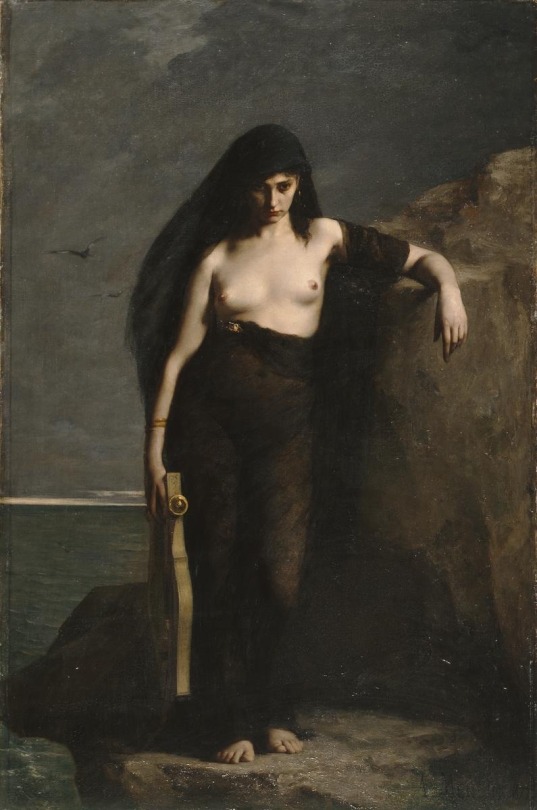The Bust Of A Middle Aged Man Made Out Of Butter Was Sitting On My Bathroom Counter. It Turned And Began
The bust of a middle aged man made out of butter was sitting on my bathroom counter. It turned and began to scream at me, but the scream was utterly silent. Everything was so silent. I was so frightened of the butter bust.
More Posts from The-berriest-berry-art and Others

Detroit Free Press, Michigan, November 27, 1958

I worked very hard on this





Help us by spreading information
Please return us to a world where Notp and squick are used for a ship you don’t like instead of just making up a load of bullshit about how immoral it is or w/e lol

Sappho (1877) by Charles Auguste Mengin (1853 - 1933)
Sappho (c. 630 – c. 570 BC) was an Archaic Greek poet from Eresos or Mytilene on the island of Lesbos. Sappho is known for her lyric poetry, written to be sung while accompanied by music. In ancient times, Sappho was widely regarded as one of the greatest lyric poets and was given names such as the “Tenth Muse” and “The Poetess”. Most of Sappho’s poetry is now lost, and what is extant has mostly survived in fragmentary form; only the “Ode to Aphrodite” is certainly complete. As well as lyric poetry, ancient commentators claimed that Sappho wrote elegiac and iambic poetry. Three epigrams attributed to Sappho are extant, but these are actually Hellenisticimitations of Sappho’s style.
The term sapphic (WLW) is derived from her name and the term lesbian derived from the island where she lived (Lesbos). The sexual identity of Sappho has been long debated and continues as such to this day. Some interpret her poems as meaning she had relationship with women. Her new style of poetry was called a “sapphic stanza” (four lines of Ancient Greek lyric poetry). Her songs often mentioned various emotions to her susceptibility to women, which later, derived the terms sapphic and lesbian.

REBLOG THIS POST OR SUFFER MY CURSE
I have made the pilgrimage

If you never hear from me again, I’ve fallen through a hole in reality and am now stuck in gay, spooky Windows 95
Holding Jews accountable for Lord Dampnut winning the election because white people overwhelmingly supported him and “Jews are White People” is both antisemitic and counterfactual. The only American ethnic group to vote against him in a greater proportion than Jews is Black people.










Ink Drawing Tutorial by Bryan Schiavone
For more: artwoonz.com

As extinctions of animals and plants accelerate around the globe, Native American tribes with limited funding are trying to reestablish imperiled species and restore their habitats — measures that parallel growing calls to “rewild” places by reviving degraded natural systems.
But the direct relationship that Native Americans perceive between people and wildlife differentiates their approach from Western conservationists, who often emphasize “management” of habitat and wildlife that humans have dominion over, said Julie Thorstenson, executive director of the Native American Fish & Wildlife Society.
“Western science looks at humans as kind of external managers of the land and of the ecosystem,” she said. “Indigenous people see themselves as part of it.”
The Nakoda and Aaniiih people have struggled to restore their land to a wilder state. Plague periodically wipes out ferret populations, and half the foxes released so far may have died or fled.
But tribal members say they’re committed to rebuilding native species with deep cultural significance to restore balance between humans and the natural world. Tribal elders speak nostalgically of the long-gone Swift Fox Society, which prized the secretive, rarely seen animals and used their pelts and tails to adorn hair braids and costumes. They call the foxes and ferrets their “relatives.”
“It’s like having your family back,” said Mike Fox, former director of the Fort Belknap wildlife program. “We have a pretty darn good spot on the Northern Plains to bring these animals back and just about complete the circle of animals that were originally here.”
Read more
-
 rainynight1 liked this · 2 weeks ago
rainynight1 liked this · 2 weeks ago -
 whitetiger94things reblogged this · 3 weeks ago
whitetiger94things reblogged this · 3 weeks ago -
 eternal-eepiness liked this · 1 month ago
eternal-eepiness liked this · 1 month ago -
 manyteethwitch liked this · 1 month ago
manyteethwitch liked this · 1 month ago -
 phantomspider liked this · 1 month ago
phantomspider liked this · 1 month ago -
 galacticsomber liked this · 1 month ago
galacticsomber liked this · 1 month ago -
 rad1callyrad1cal liked this · 1 month ago
rad1callyrad1cal liked this · 1 month ago -
 nicolaslg12 liked this · 1 month ago
nicolaslg12 liked this · 1 month ago -
 maybeimnotryn liked this · 1 month ago
maybeimnotryn liked this · 1 month ago -
 melonmochi liked this · 1 month ago
melonmochi liked this · 1 month ago -
 totallynot5snakes liked this · 2 months ago
totallynot5snakes liked this · 2 months ago -
 schoolchaos liked this · 2 months ago
schoolchaos liked this · 2 months ago -
 blessedpunk liked this · 2 months ago
blessedpunk liked this · 2 months ago -
 littletornado liked this · 2 months ago
littletornado liked this · 2 months ago -
 bigdumbwolf liked this · 2 months ago
bigdumbwolf liked this · 2 months ago -
 blackpointgame liked this · 2 months ago
blackpointgame liked this · 2 months ago -
 sophieswundergarten liked this · 2 months ago
sophieswundergarten liked this · 2 months ago -
 vega-and-me reblogged this · 2 months ago
vega-and-me reblogged this · 2 months ago -
 vega-and-me liked this · 2 months ago
vega-and-me liked this · 2 months ago -
 laneynoir liked this · 2 months ago
laneynoir liked this · 2 months ago -
 kaslynspeaks reblogged this · 2 months ago
kaslynspeaks reblogged this · 2 months ago -
 elliotandcoolpeople liked this · 2 months ago
elliotandcoolpeople liked this · 2 months ago -
 tiffanyyxrose liked this · 2 months ago
tiffanyyxrose liked this · 2 months ago -
 your-left-nut liked this · 2 months ago
your-left-nut liked this · 2 months ago -
 slowly-becoming-like-draculaura liked this · 2 months ago
slowly-becoming-like-draculaura liked this · 2 months ago -
 ophio-phagus liked this · 2 months ago
ophio-phagus liked this · 2 months ago -
 tomoe242 liked this · 3 months ago
tomoe242 liked this · 3 months ago -
 coffee-weirdo liked this · 3 months ago
coffee-weirdo liked this · 3 months ago -
 gayassbluemouse liked this · 3 months ago
gayassbluemouse liked this · 3 months ago -
 kenzie-dcp liked this · 3 months ago
kenzie-dcp liked this · 3 months ago -
 walison-abigobaldo-iii liked this · 3 months ago
walison-abigobaldo-iii liked this · 3 months ago -
 chocolateempathbakerytrash liked this · 3 months ago
chocolateempathbakerytrash liked this · 3 months ago -
 milk-powrit liked this · 3 months ago
milk-powrit liked this · 3 months ago -
 who101 liked this · 4 months ago
who101 liked this · 4 months ago -
 lovelyspookyruins reblogged this · 4 months ago
lovelyspookyruins reblogged this · 4 months ago -
 lovelyspookyruins liked this · 4 months ago
lovelyspookyruins liked this · 4 months ago -
 technicallyoneofakind reblogged this · 4 months ago
technicallyoneofakind reblogged this · 4 months ago -
 technicallyoneofakind liked this · 4 months ago
technicallyoneofakind liked this · 4 months ago -
 jeidai reblogged this · 4 months ago
jeidai reblogged this · 4 months ago -
 h0ldenon liked this · 4 months ago
h0ldenon liked this · 4 months ago -
 zacharie-meh reblogged this · 4 months ago
zacharie-meh reblogged this · 4 months ago -
 zacharie-meh liked this · 4 months ago
zacharie-meh liked this · 4 months ago -
 dystopian-heathen reblogged this · 4 months ago
dystopian-heathen reblogged this · 4 months ago -
 miserys-inkwell liked this · 5 months ago
miserys-inkwell liked this · 5 months ago -
 mildlytired reblogged this · 5 months ago
mildlytired reblogged this · 5 months ago -
 starstrucksid liked this · 5 months ago
starstrucksid liked this · 5 months ago -
 un-realistictransitiongoals reblogged this · 5 months ago
un-realistictransitiongoals reblogged this · 5 months ago -
 nob0dyyimportant liked this · 5 months ago
nob0dyyimportant liked this · 5 months ago -
 nerdyabc123 liked this · 5 months ago
nerdyabc123 liked this · 5 months ago